Updated 01/18/18
Click here to go straight to the recipe
I grabbed a handful of hot peppers at the farmer’s market a couple of months ago to ferment. It was so easy! Every time I try a new ferment, I find myself saying that. I’m convinced that anyone attempting to simplify their life will eventually discover fermentation. At least, that’s how it happened for me. I wanted to cut out plastic and now obsess over my kombucha mother.
I spied a few hot peppers at the farmer’s market on Sunday (but not many) here in California, but for most of us in the Northern Hemisphere who want to eat seasonally, hot peppers have fallen from the menu. I do have some readers in the Southern Hemisphere though, so maybe some of you can soon harvest hot peppers and make this 🙂
Ingredients
- A handful of hot peppers
- 2 cloves garlic
- 1/2 teaspoon salt or to taste
Directions
1. Chop peppers and mince garlic.
2. Combine peppers, garlic and salt. Ordinarily I use my clean hands to combine the everything for a vegetable ferment. Don’t do this with hot peppers! Your skin will thank you. Taste a little to make sure you’ve added enough salt.
3. To ferment vegetables, you must submerge them in liquid in order for the lactic acid bacteria (present on all vegetables) to get to work and perform the fermentation. Salt helps draw out the liquid. Crushing the vegetables breaks down their cells walls, which also releases water.
When making sauerkraut, I grab the vegetables by the handful and crush them. But not hot peppers! Ouch! I crushed these with the base of a small jar, as in the above picture. I have seen beautiful wooden vegetable pounders online, but wouldn’t run out to buy one. One of the beauties of fermentation is its simplicity. You don’t need a lot of fancy equipment to ferment food. Of course if someone offers me a beautiful wooden vegetable pounder, I’ll take it ;p
4. Pack everything in an appropriate size jar. Leave about an inch and a half head space at the top.

5. If you did not render enough water from the peppers by salting and crushing them, pour a bit of tap water over them until covered. If you have heavily chlorinated tap water, let it sit out for several hours to dissipate the chlorine. Chlorine can kill the microbes that power the fermentation.
After I added a bit of water, I shoved a folded cabbage leaf into the top of the jar to submerge the peppers under the liquid. Eventually that will transform into a tasty jalapeńo-infused cabbage leaf. Mince it up and toss it into something. I have some 1-inch glass bowls that, when placed in the top of a small jar, also do the trick. nb: For a vegetable ferment to work, you must submerge the vegetables in liquid!
6. Replace the lid on the jar and set it aside to ferment for at least a month. For the first several days to a week, the bacteria will create a lot of carbon dioxide as a byproduct of fermentation (if all goes well). Burp your jar (i.e., open it) daily to release the CO2 and built-up pressure. You don’t want a hot pepper explosion all over your kitchen.
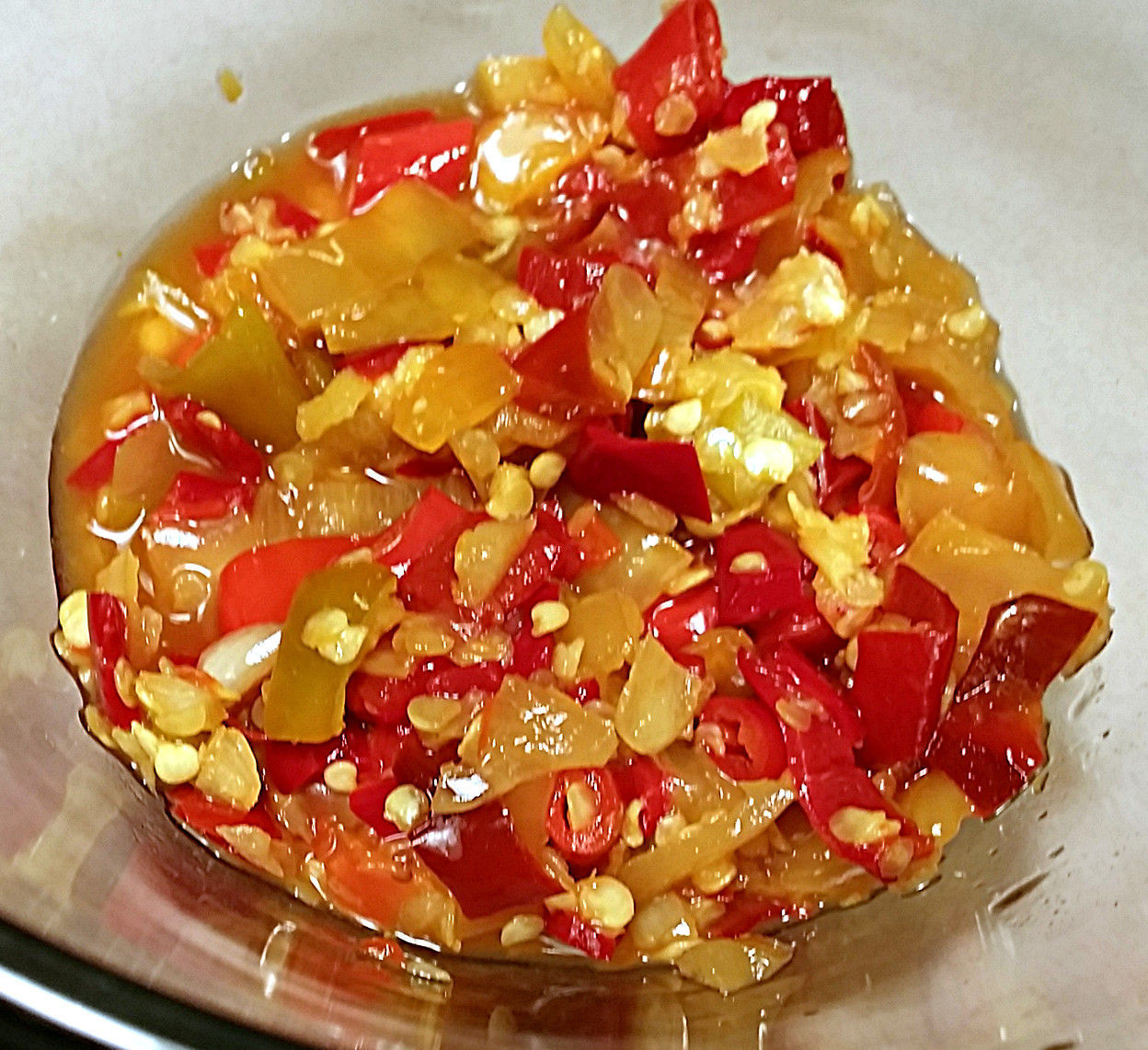
7. Blend if desired.
8. Store your peppers in the fridge. This will keep for at least a year.
That’s it!
What to do with your hot peppers
- I serve chopped fermented jalapeńos and chopped preserved lemons on the side of Indian dishes. So good!
- If you opt to keep these chopped rather than purée them, after you’ve eaten all the peppers, save the liquid. That is gold. If you want to add some heat and flavor to a dish, just pour in a bit of the liquid. It’s potent and delicious.
- You can also cook with these and some heat to recipes. Yes, cooking kills the good microbes, but these taste so good.
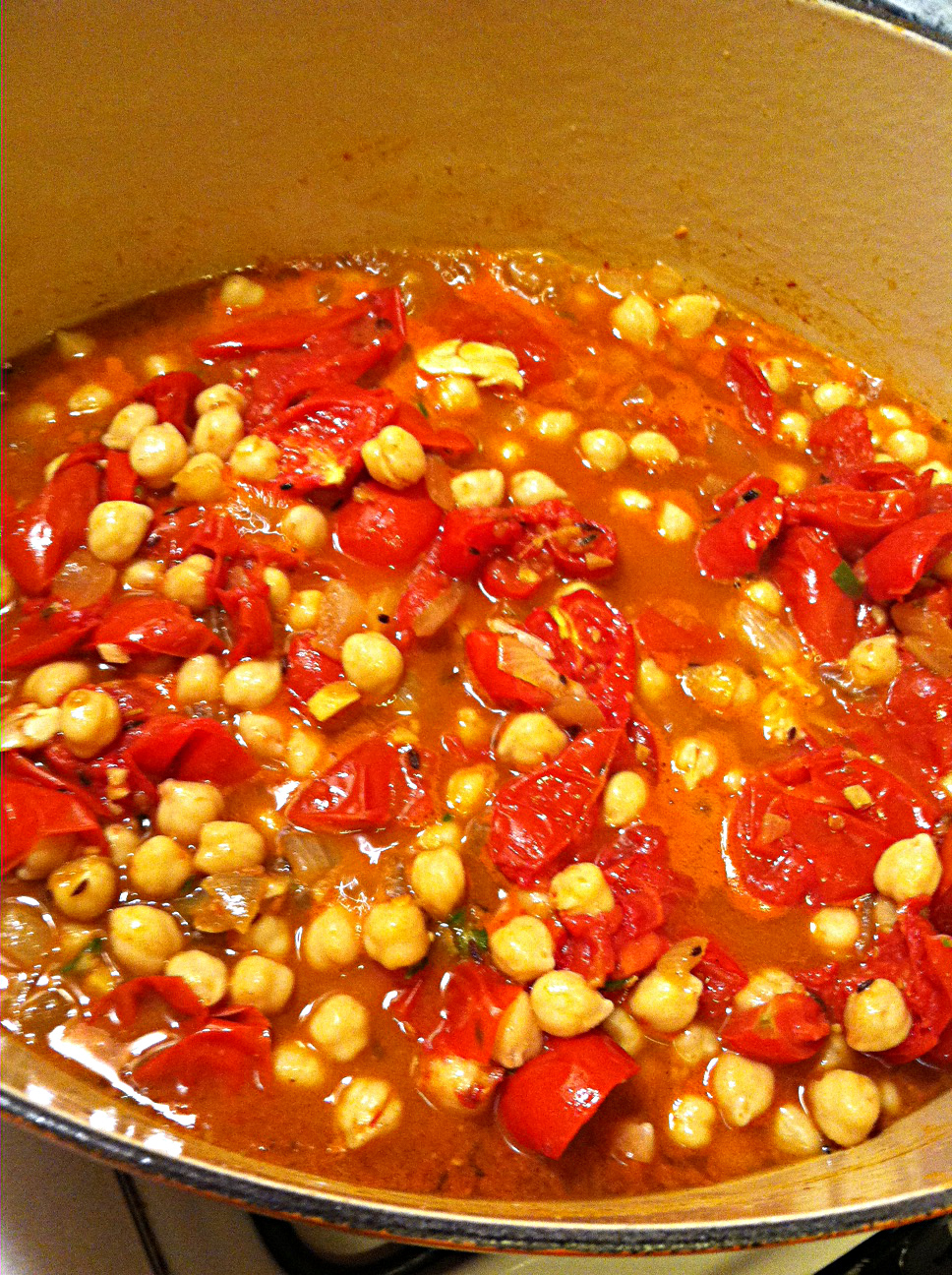
I cook channa masala quite often (above) and last week substituted a tablespoon of hot pepper sauce for the serano chiles the recipe called for. It was so good, I had leftovers for breakfast the next day.

Last week, I also made this Alton Brown recipe for baked beans (see above) and substituted two tablespoons of my puréed fermented peppers for the jalapeños. Delicious!
Yes you do have to wait at least a month before you can enjoy your peppers, which means you have to plan ahead. But they requires zero energy to make; they contain healthy, living bacterial cultures; and they taste delicious.
Fermented Hot Peppers
Ingredients
- A handful of hot peppers
- 2 cloves garlic
- 1/2 teaspoon salt or to taste
Directions
1. Chop peppers and mince garlic.
2. Combine peppers, garlic and salt. Do not mix hot peppers with your hands; you’ll burn your skin. Taste a little to make sure you’ve added enough salt.
3. Crush the peppers with a pestle or vegetable pounder.
4. Pack everything in an appropriate size jar. Leave about an inch and a half head space at the top.
5. If you did not render enough water from the peppers by salting and crushing them, pour a bit of tap water over them until covered. Shove a folded cabbage leaf into the top of the jar to submerge the peppers under the liquid.
6. Replace the lid on the jar and set it aside to ferment for at least a month. For the first several days to a week, burp your jar (i.e., open it) daily to release the CO2 and built-up pressure.
7. Blend if desired.
8. Store your in the fridge. This will keep for at least a year.


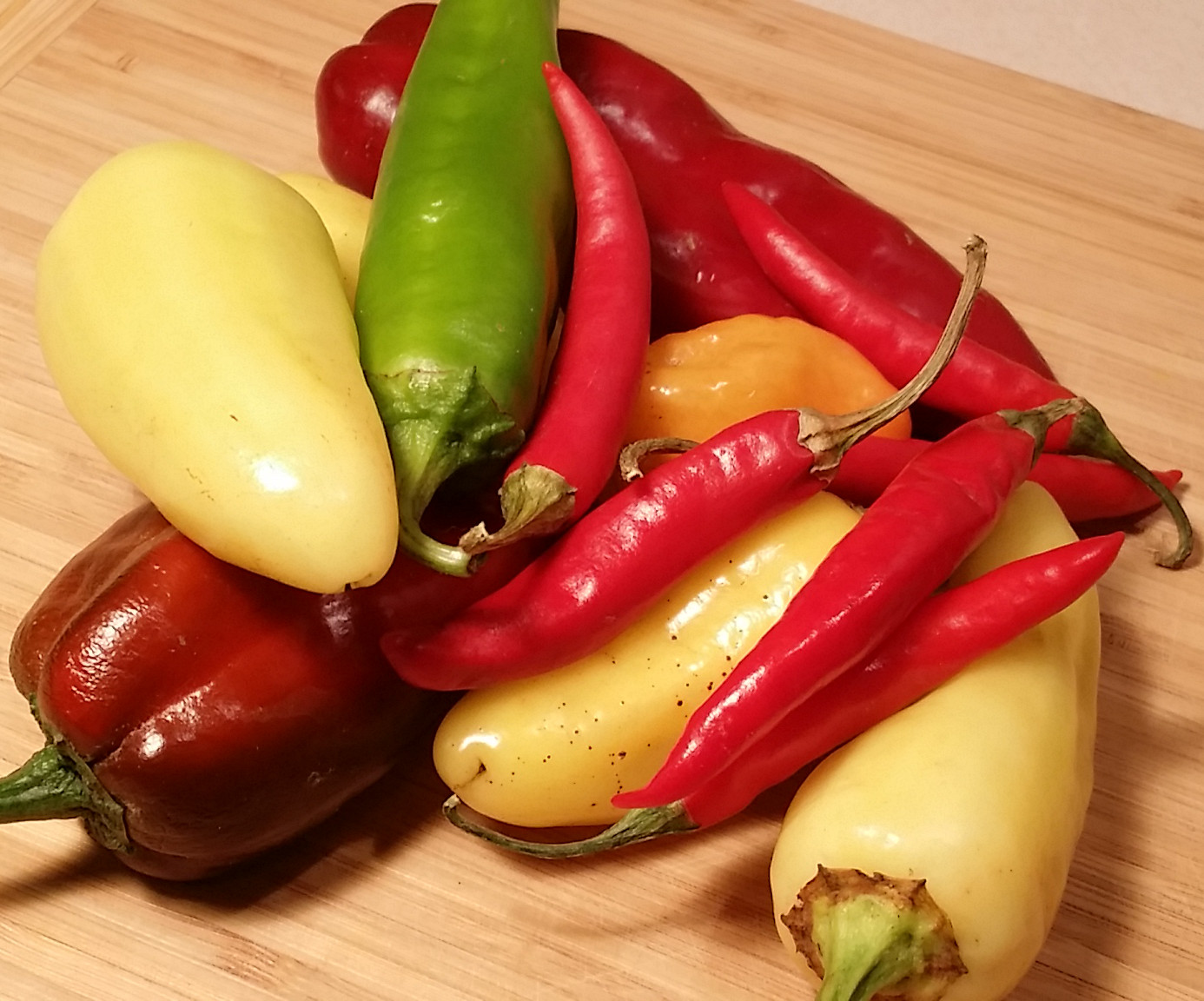
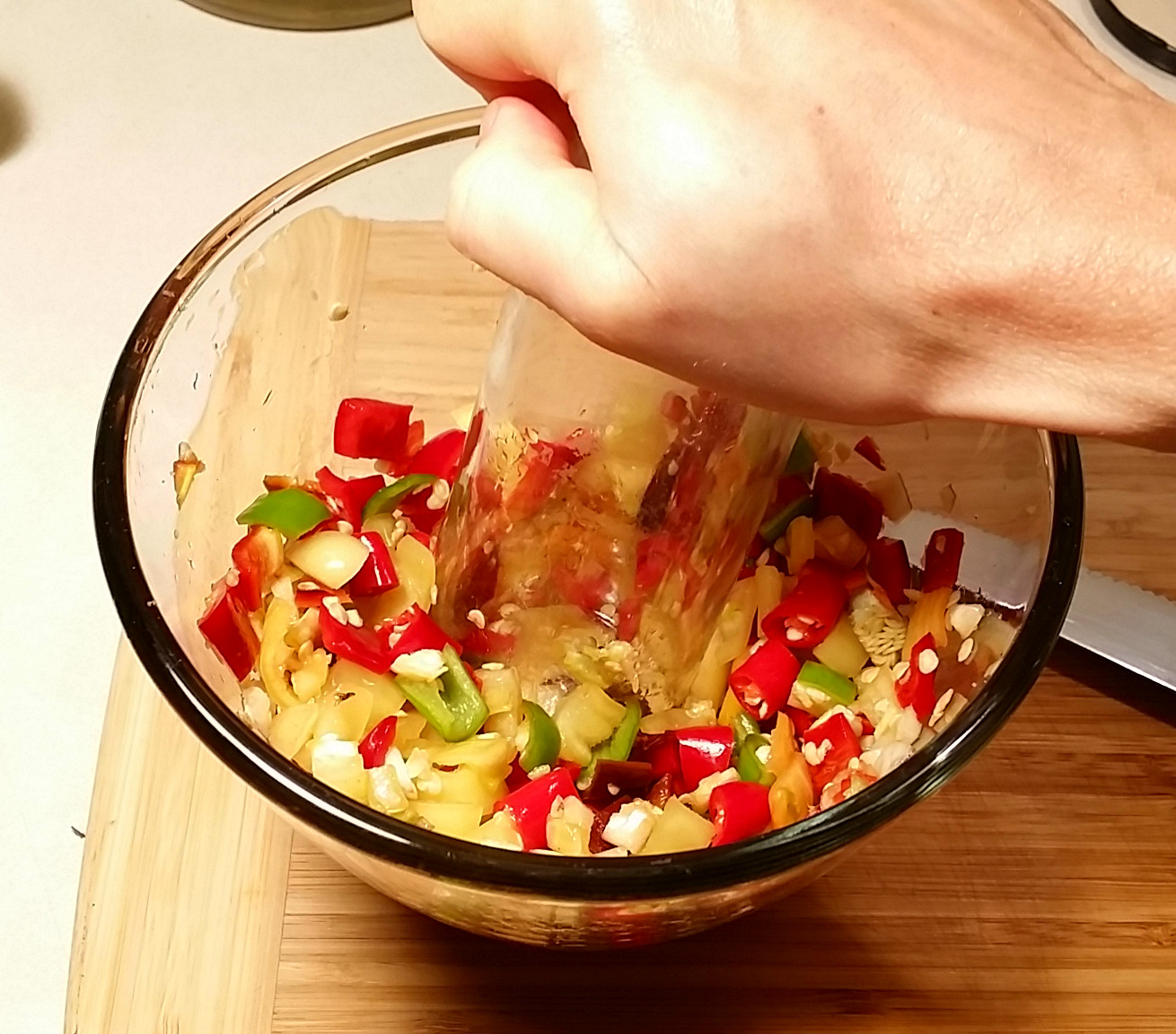
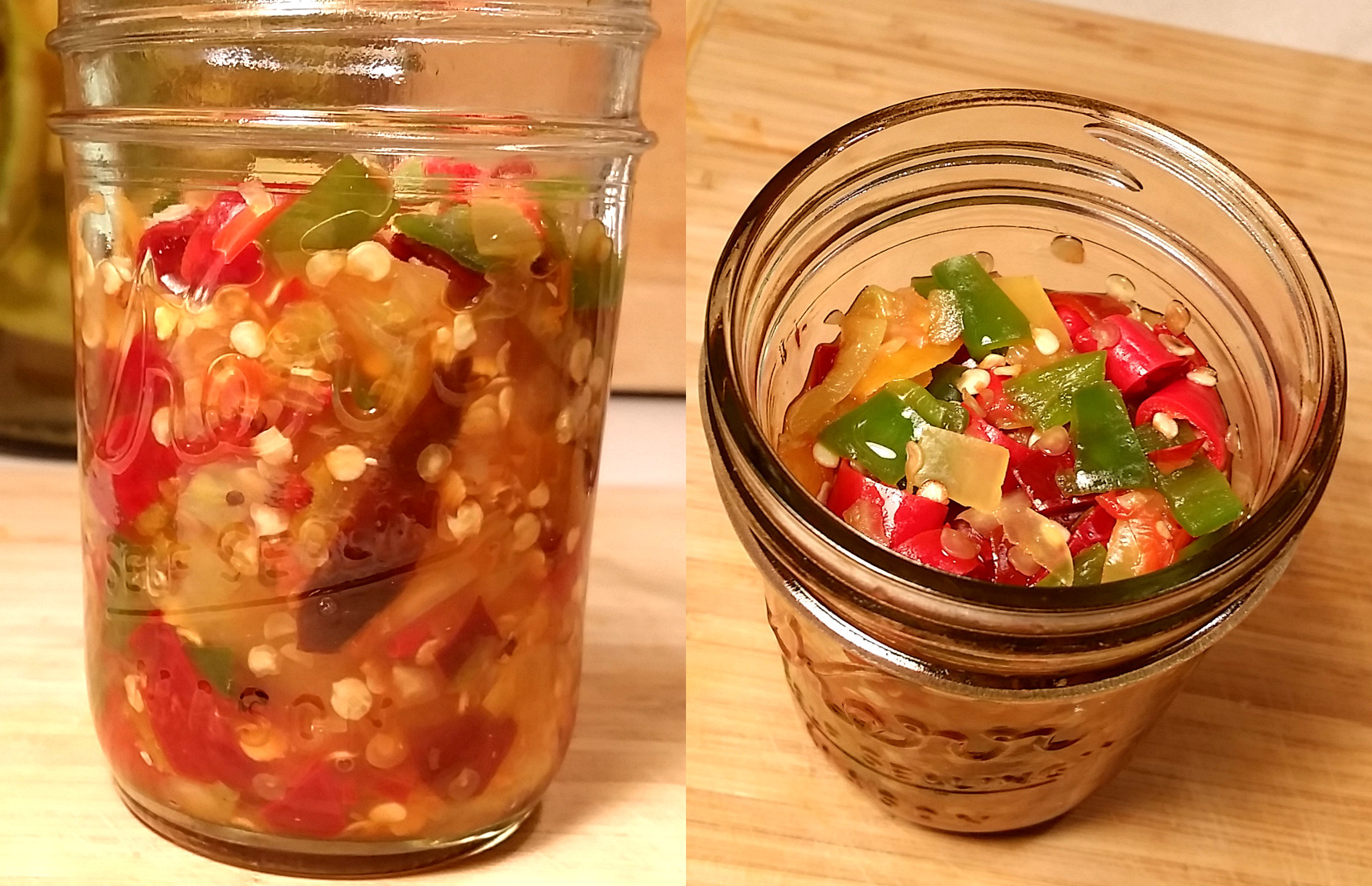
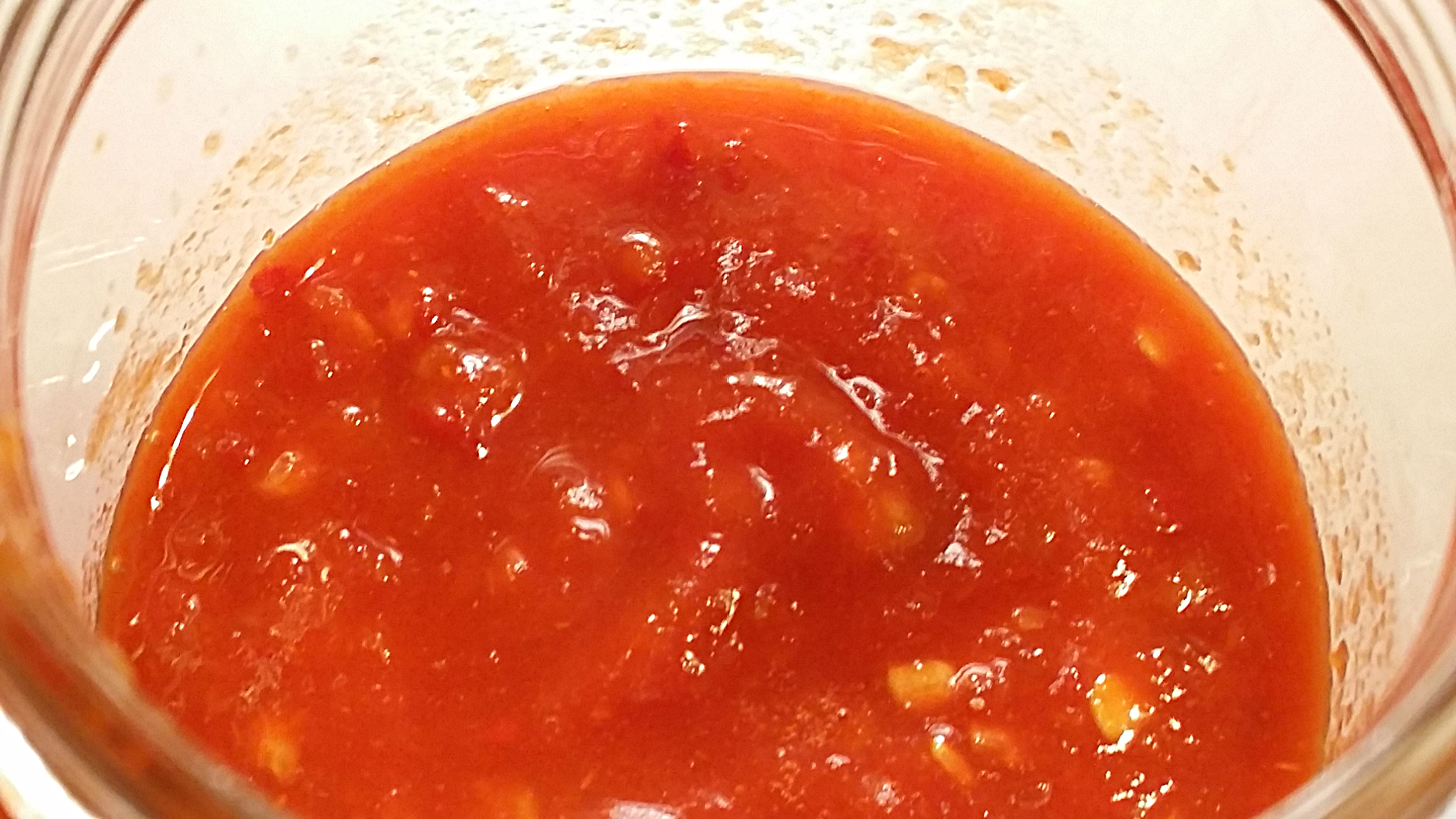
I’m sure if I tried that here, I would develop gray mold and a stink in three days. Although more sterile than the instructions called for, that’s what happened with my mead. The honey was local, unfiltered, and had shown no signs of growing anything for many, many months, but as soon as I diluted it, “things” grew. I’ve been afraid to try the mead again, considering the scarcity of raw, local honey around here.
***I think you are blessed with friendly microbes in California.*** My wild “things” have more enmity for me. 🙁 Although, I did have the nerve to try a sourdough starter (flour is cheap). Five days so far, and I still have a sweet scent coming from it. Yay!
My husband has mead fermenting in a jar as a first attempt. When I checked to see if the yeast had activated by giving is a little shake, the contents erupted into a spewing foam! Exciting, but the stickiest mess ever. Fortunately only a few ounces ended up (in fine mist form) on the walls, windows, floor, our toddler, her toys and me.
If you are willing to give fermentation another attempt (hopefully many!), check out The Art of Fermentation by Sandor Ellix Katz. I’m sure it will inspire you to do so.
Wow, that mead is active! I’m glad to hear only a little escaped from the jar. I’ve started making kombucha and every time I open a bottle, I’m worried I’ll have an explosion. So far, I haven’t. But after reading your comment, I think I’ll open it outside.
I love The Art of Fermentation too. I read a section of it last night before bed 🙂
Oh no! I’m sorry to hear your mead didn’t turn out 🙁 That’s so disappointing. I have had a bit of mold grow on vegetable ferments and I just scrape that off, but it would be harder with mead. I’m glad your sourdough starter is doing well. That’s exciting. My sourdough is my favorite culture. I bake with it at least once a week. Good luck with yours 🙂
This sounds great. I have a aged vinegar based hot pepper sauce that has become divine and goes into everything. I’ll have to try to fermented kind you’re doing! We’re (obviously) wildly hooked on fermenting anything.
Yum. Hot sauce is so versatile. I wish I had made more of this but it was a first attempt so I wasn’t sure how it would turn out. I’m obsessed with fermentation. It’s fascinating and delicious.
I would really like to make mead, so I will probably check that out. Thanks for the encouragement, Kelly!
Happy Thanksgiving, Northern California-style!!!
Thank you! Happy Thanksgiving to you too! Are you buried in snow? Or did the storm bypass you?
Definitely trying this, I’m growing chilli and capsicum in the garden at the moment. We are loving fermenting, its so rewarding!
Great! I will have to wait several months before I can make more. I love fermenting too. I’ve always enjoyed cooking but fermenting is very special. It’s alive, after all. Enjoy your garden 🙂
I’ve been fermenting my own hot sauce for a few years now. I submerge mine after roasting, peeling & chopping in a brine, then let it sit for a good month or two on the counter. Then I stick it in the back of the fridge for a few more months before pureeing and adding vinegar to taste. It’s very much like Tabasco, but since I make mine with random hot peppers, mine tends to have a bit more kick.
Yum! Is it difficult to peel all the skins off all those small peppers? By the way, I bought that cookbook you recommended (Stillroom Cookery). I love the section on vinegar. I’m going to have to try making that too. She outlines a few different methods in there. I could use it to make your hot pepper sauce 🙂 Thanks!
This is exciting! I’ve been fermenting for awhile but haven’t come across any hot sauce recipes. I use Tabasco all the time, but I’d love to use something homemade and with fermentation benefits to boot.
It’s very good and so easy. I also have been throwing jalapenos into my sauerkraut lately. Really tasty.
I just love your blog and what you are doing with promoting zero waste. This fermented hot sauce is such a great idea to try when I use up the last peppers in the garden this summer, instead of freezing or drying them. Is it sort of sriracha-ey in flavor? I also love the idea of using your own hot sauce in recipes when they call for a fresh hot pepper, one more way to eat local all year round!
Thank you! I LOVE yours and what you’re doing! I have looked at farms to buy but haven’t taken the plunge. My sister made the move about three years ago and I’m living vicariously through her…
I think sriracha sauce is a bit sweet and more vinegary. This stuff is just downright hot. I add just a teaspoon or two of hot sauce to a pot of beans and it adds a huge kick. I’m making black beans tonight and I’ll use this instead of (as you point out) buying a jalapeño shipped a thousand miles or more from Mexico. Also, no chopping jalapeños today!
I am obsessed with fermenting but I like the idea of drying hot peppers too and would like to try that. My neighbor has a solar food dryer he lets me use 🙂
the sunny back window of a car works pretty well for hot peppers since they are not too high in moisture, just cut in half and laid out on a baking sheet!
Great idea! It does get hot enough in there to dehydrate stuff. I’ll have to try that.
It is 11 am here and I am CRAVING hot sauce like crazy right now. Must be the grey and dreary weather. I am particularly hooked by your channa masala picture. Do you have the recipe somewhere and are you willing to share? I want to eat so. much. of. this. the upcoming weekend. Thanks and cheers! Tobi
I hope your skies have brightened up. Are you on the East Coast? The channa masala is so, so good. I could probably eat it every day. I use this recipe: http://www.chow.com/recipes/30267-chole-chana-masala
I usually skip the blanching of the tomatoes but it does turn out better that way. In the summer, I roasted and froze tomatoes from the market and last week used my last jar for this 🙁 I hope you like it!
To dry peppers you can take a needle and strong thread and string them through the stems. Hang them like a banner in an airy place to dry them. You can either remove from the string and store or just snip off what you need each time.
Thanks for the info Gina! I’ll to try that this summer. ~ Anne Marie
Just found this post of yours – must have missed it the first time round. Looks great – will have to give this one a go! : )
Just one question…do you leave on the counter for four weeks, rather than in the fridge? When I’ve made saurkraut / cortido, I’ve left on the bench for a week then moved to the fridge. Am I doing this wrong or there a different rule for peppers / chillis?
I’m finding there are no hard and fast rules to fermentation. I let my sauerkraut/krautchi sit out for longer, usually a month or so. Some people prefer the flavor after a week of fermentation. I’ve made this only with a month-long fermentation but I don’t see why a shorter period wouldn’t work. I don’t know of any special rules for hot peppers (but I’m not an expert).
One of the things I love about it is that I can still enjoy hot peppers when they are out of season (like right now). And like all fermentations I’ve tried, this is so easy! Let me know how it goes.
I made a jar of mixed hot peppers in a simple salt brine. While sitting out on the counter they were incredibly hot but once I put in the fridge (after about 10 days) they lost almost all their heat. Any suggestions? My father likes the peppers for sandwiches but wants them very hot.
I haven’t had this problem but I looked it up and I found other people who experienced this same loss of heat. By any chance did you add sugar or vinegar to your peppers? You said you used just a simple salt brine, so you probably didn’t. Apparently sugar reduces the heat. Sorry I am not more helpful.
[…] a friend’s garden plus our own, so I am experimenting a ferment of them as inspired by the Zero Waste Chef. I will do a sauerkraut this weekend as we have a head of cabbage to use […]
A nit pick: “If you have heavily chlorinated tap water, let it sit out for several hours to dissipate the chlorine” What do you mean by “dissipate” the chlorine? At room temp and ambient pressure, it is not going anywhere.
[…] https://zerowastechef.com/2014/11/25/fermented-hot-pepper-sauce/ […]